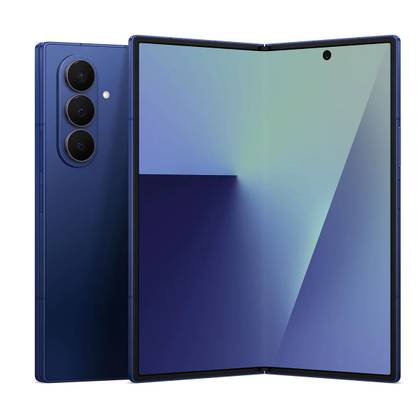Samsung’s Galaxy Z Fold 7 kicked off its run with a bang in the United States, smashing pre-order records when it debuted in July. As per the company, the foldable didn’t just edge past previous models, but also set a new bar entirely, pulling in the highest number of Fold pre-orders Samsung has ever seen.
Pre-orders for the Fold 7 and Flip 7 combined jumped more than 25% compared to last year’s generation, while US carrier-linked orders surged close to 60%. That strong opening quickly carried over into retail sales, where the Fold 7 is now tracking about 50% ahead of the Fold 6 at the same stage in its release cycle.
Part of that success comes from who’s actually buying these devices. Samsung says nearly 30% of Fold 7 buyers are longtime Galaxy S Ultra owners who’ve decided to switch over, while the Flip 7 is pulling in a growing number of first-time Galaxy users, especially those crossing over from other brands. That mix of upgrades and fresh adopters is helping the Z series broaden its reach, giving foldable phones a stronger foothold in the mainstream than ever before.
The company highlights that slimmer, lighter hardware, stronger durability, and new Galaxy AI tools make these phones more appealing to audiences who may have skipped past earlier generations.
The Galaxy Z Fold 7’s rise comes at the expense of Samsung’s Ultra line
This creates a unique challenge for Samsung, though. The company itself has admitted that the Fold 7 is cannibalizing sales of its Ultra lineup. In other words, the people who used to buy the top-tier Galaxy S Ultra are now opting for the Fold instead. So, while the Fold 7’s success shows just how far foldables have come, it also risks overshadowing one of Samsung’s most established and profitable product lines.
What’s driving all this momentum? The Fold 7 has slimmed down into Samsung’s lightest book-style foldable yet, while still packing serious hardware like a 200MP main camera — the same you’d expect on an Ultra phone. It introduces durability upgrades like Gorilla Glass Ceramic 2, an improved hinge, and IP48 water-and-dust resistance, though Samsung did sacrifice S Pen support this year to keep the design thin. Add in AI-powered features such as Photo Assist and Transcript Assist, and the Fold 7 now straddles the line between smartphone, tablet, and productivity tool.
That said, with success also comes the question of balance — how to keep its traditional Galaxy S lineup relevant while letting foldables grow into the mainstream. For now, though, the Fold 7’s momentum shows that foldables are no longer just a flashy experiment.

Source: Samsung
8.5/10
SoC
Snapdragon 8 Elite
Display type
Dynamic AMOLED
Display dimensions
6.5-inch external, 8-inch internal
RAM
12GB or 16GB
Samsung’s Galaxy Z Fold 7 is its slimmest, lightest foldable yet, packing a Snapdragon 8 Elite for Galaxy chip, a 200MP camera, and tougher materials like Armor FlexHinge and Gorilla Glass Ceramic 2. It opens from a 6.5-inch cover screen into an 8-inch display built for both work and entertainment.
